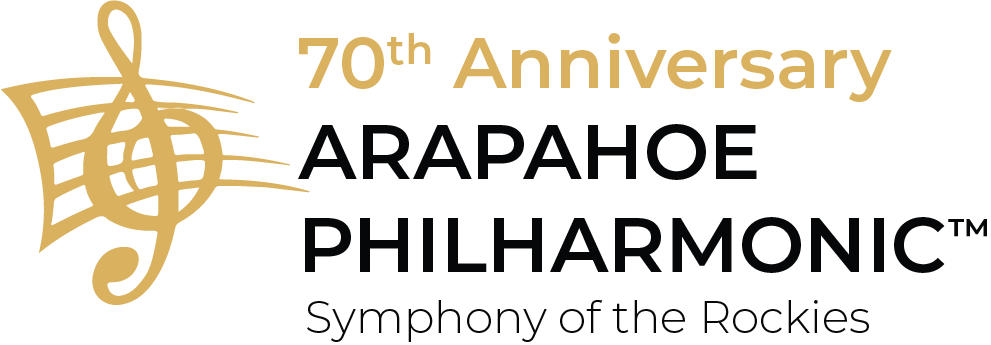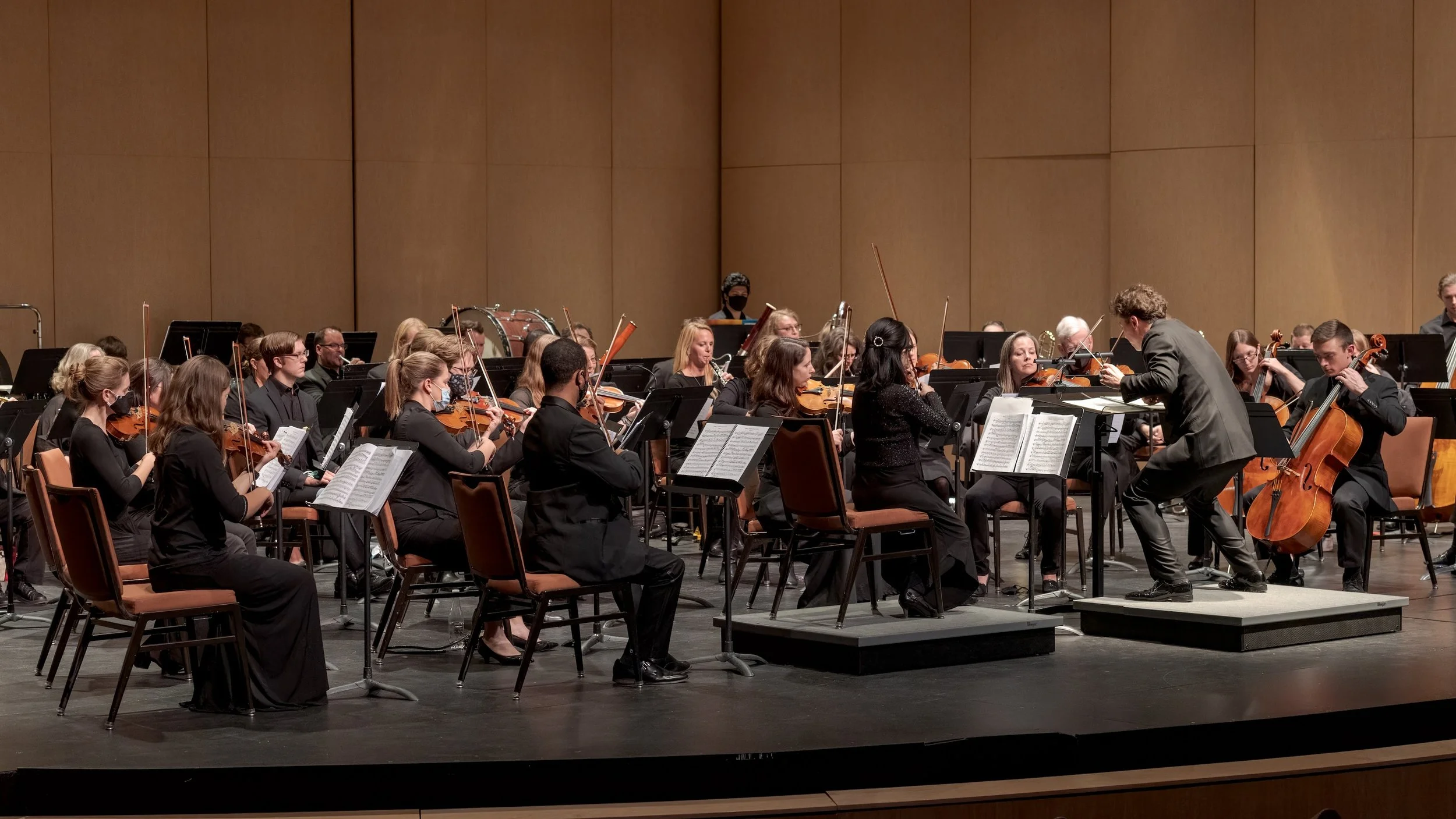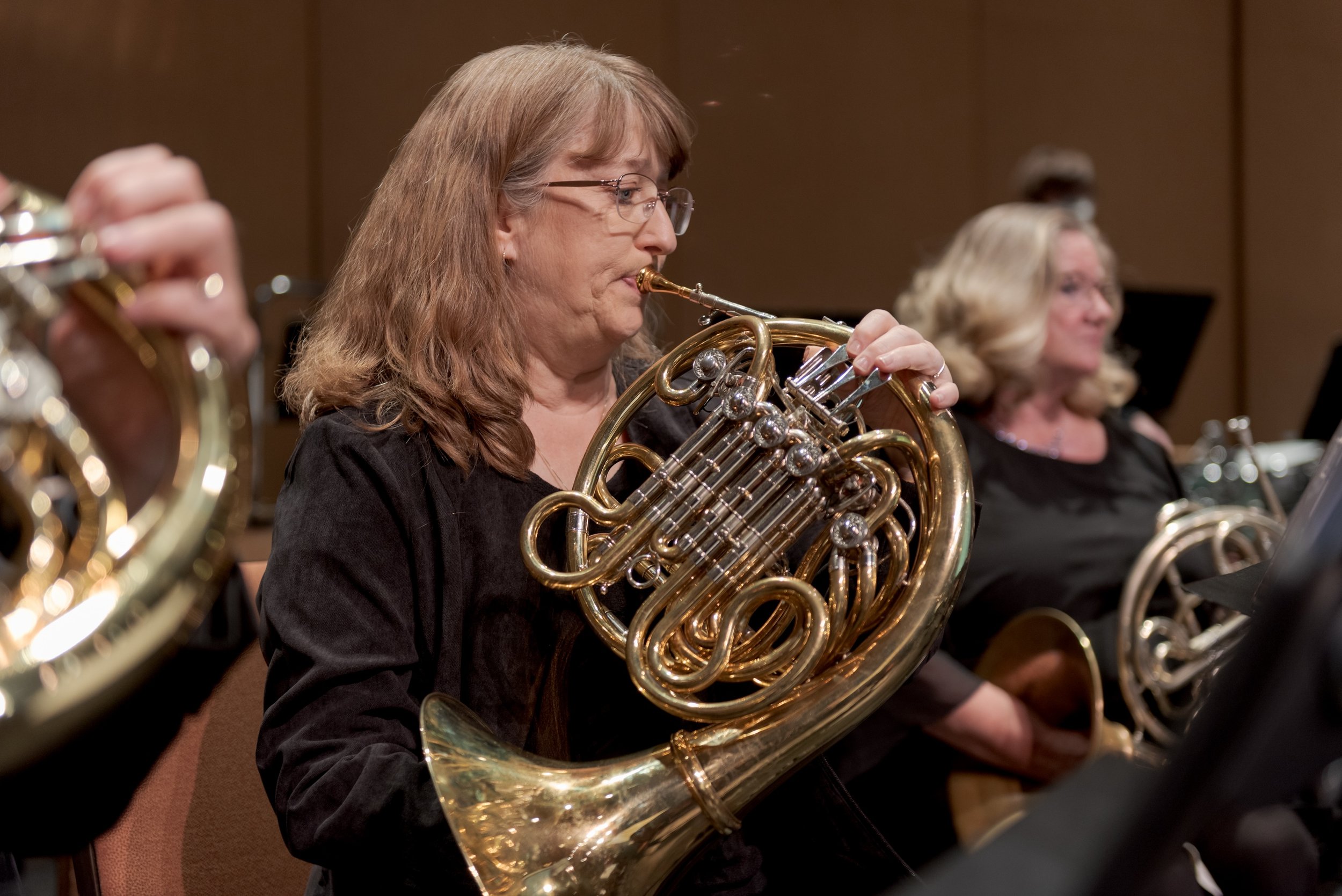
What to Expect
Many times, those new to classical music are nervous about attending concerts because they don’t know what to expect, and they may have heard that it is kind of “stuffy” with lots of rules. Relax! Classical music isn’t as intimidating as you might think. Use the tips on this page as a starting point to help you fully experience the wonderful classical music performed by the Arapahoe Philharmonic, whether it is your first time attending an orchestral concert or you are a seasoned concertgoer.
What do I wear?
Our performers will generally be in formal attire, unless we are having a special event such as a movie music night where you might see performers dressed in Star Wars or Harry Potter attire! As an audience member, however, you can wear whatever is comfortable for you. A good guide might be your personal dress code for dinner with friends, or “smart casual”. But you will probably see other concert-goers in everything from relatively dressy attire to a T-shirt and jeans, so you can feel comfortable wearing anything in this range. If you wear a hat, don’t forget to remove it during the performance so as not to block anyone’s view of the stage.
Cell Phones and Pagers
Take a break from technology! Please turn off/set to vibrate your cell phones, pagers, watch alarms, and other electronic devices for the duration of the performance. But as noted earlier, if you want to share your location on social media, that would be great! Just try not to disrupt the performance experience for your neighbors.
Where should I sit?
It may take you several concerts to decide where you prefer to sit. Do you want to be on the left side of the auditorium close to the front and watch the percussion section? Do you want to be in the center near the back and see the bigger picture of the whole performance? Do you want to be nearer the front on the right and keep a close eye on the cellos and bass players? Because we don’t have assigned seats, you can try out different locations until you find the perfect spot.
Late Seating
If you arrive late, you will need to wait until a break between pieces for an usher to allow you to enter the hall. However, late seating is not available at all performances, depending on the program. Please try to arrive in plenty of time to get seated before the lights dim and the concert begins.
Concert Etiquette/FAQ’s
How will I know when the concert is about to begin?
When you first take your seat, you may find that some musicians are already on stage even though the concert isn’t scheduled to begin for a while. Don’t worry; you’re not late. The musicians are warming up, checking over their music, looking at difficult music page turns, and getting settled before the concert begins. Just before the start of the concert, after all of the members of the orchestra are seated, the lights will dim, and the concertmaster will come out to the front of the stage, take a bow, and signal to the principal oboe player to play the note A. The rest of the orchestra will then tune their instruments to match the oboe. The conductor will then come out onto the stage, take a bow, then turn around, mount the podium, and begin the concert. It is appropriate to clap for both the concertmaster and the conductor as they bow.
Is it time to clap yet?
The tradition of clapping during concerts has changed over time. Historically, audiences have chosen not to clap between movements, but this tradition is in itself starting to change and patrons may choose to applaud whenever they feel a performance moves them to clapping or warrants it. At an Arapahoe Philharmonic Concert, we encourage you to clap. Whenever you clap, the musicians will be glad to know that you are enjoying their performance!
As for historical reference, it has been considered important not to clap at the break points between movements in a larger composition. Holding applause between movements is thought to be respectful to the performers’ concentration and to help them maintain the momentum of the music they are creating. In addition, quiet endings have a lingering magic that can be too easily broken by audience members in a hurry to initiate applause. Sacred works offered in worship are not applauded at all, but when presented in an artistic context such as an Arapahoe Philharmonic concert, sacred works still often get respectful silence for a long moment before any applause is generated.
If you want to anticipate when the composition will come to an end, you can count the number of movements for an entire work as listed in the program booklet. The movements are also usually easy to hear because of the different tempos or speeds and moods of the music, so keep track of the sections and applaud after the final movement. The occasional composer can trick you, however, by not inserting a pause between movements. Beethoven, for example, doesn’t have a pause between the third and fourth movements of his 5th Symphony. Your best bet is to watch the conductor. He will let you know when a piece is over, so wait until he puts his arms down and turns to face the audience. If his hands remain in front of him, he is waiting for the orchestra to be ready to continue with the next movement of the piece. If the work is completed, the conductor will also shake the hands of the concertmaster, and the soloist if there is one. If you’re still in doubt, you can always wait until the majority of the crowd begins to applaud.
Other Sounds During the Concert
The most important thing to remember at a classical music concert is to make sure others can listen to the music undisturbed. Instruments are usually not amplified, so audience noises can be annoying and distracting. Our audiences want to hear everything this wonderful music has to offer! Don’t talk, whisper, sing or hum along, or move personal belongings. Even the quietest whispers can be heard in the concert hall and can prove to be a distraction to patrons and musicians alike. Conversation at a concert normally stops at the first entrance of the concertmaster, conductor, or soloist. Save your comments until intermission or after the concert, as it will give you and your friends much more to discuss. This will ensure that you and the other patrons will enjoy the full benefit of the performance.
Please turn off your cell phones, pagers, watch alarms, and other electronic devices for the duration of the performance. We record our performances, so we appreciate your help in maintaining the quality of our recordings. Should you need to use oxygen at a concert, we ask that you please set your tank to a quiet, continuous flow if possible, so that no extraneous sounds are recorded.
Don’t enter or exit the hall while a performance is in progress unless absolutely necessary. If you must leave your seat, do so quickly and quietly, proceeding to the nearest door or asking the nearest usher for assistance.
Coughing/Sneezing
If you have a cold or allergies, please take appropriate medication in advance to control symptoms. For that tickle in the throat, use a cough drop to ensure that the concert experience is as pleasurable as possible for you and those around you. Cough drops are available from the Box Office. Please kindly unwrap them ahead of time as well.
Experienced concertgoers try to suppress coughs and sneezes until a loud passage arrives, and muffle these. If you cannot suppress a fit of coughing, it is acceptable to depart from the Hall until you feel better. There are water fountains in the lobby.
Encores
Occasionally, if the audience continues enthusiastic applause and a soloist and orchestra are prepared to play an additional composition, an encore performance will be provided. This is unlikely in most of the Arapahoe Philharmonic concerts, but if it happens, now you know what is going on!
Thank you for reviewing this information. We hope that you find it useful as you experience the delights of a live classical concert performance with the Arapahoe Philharmonic! If you have additional questions, please check in with the Box Office prior to the concert.




